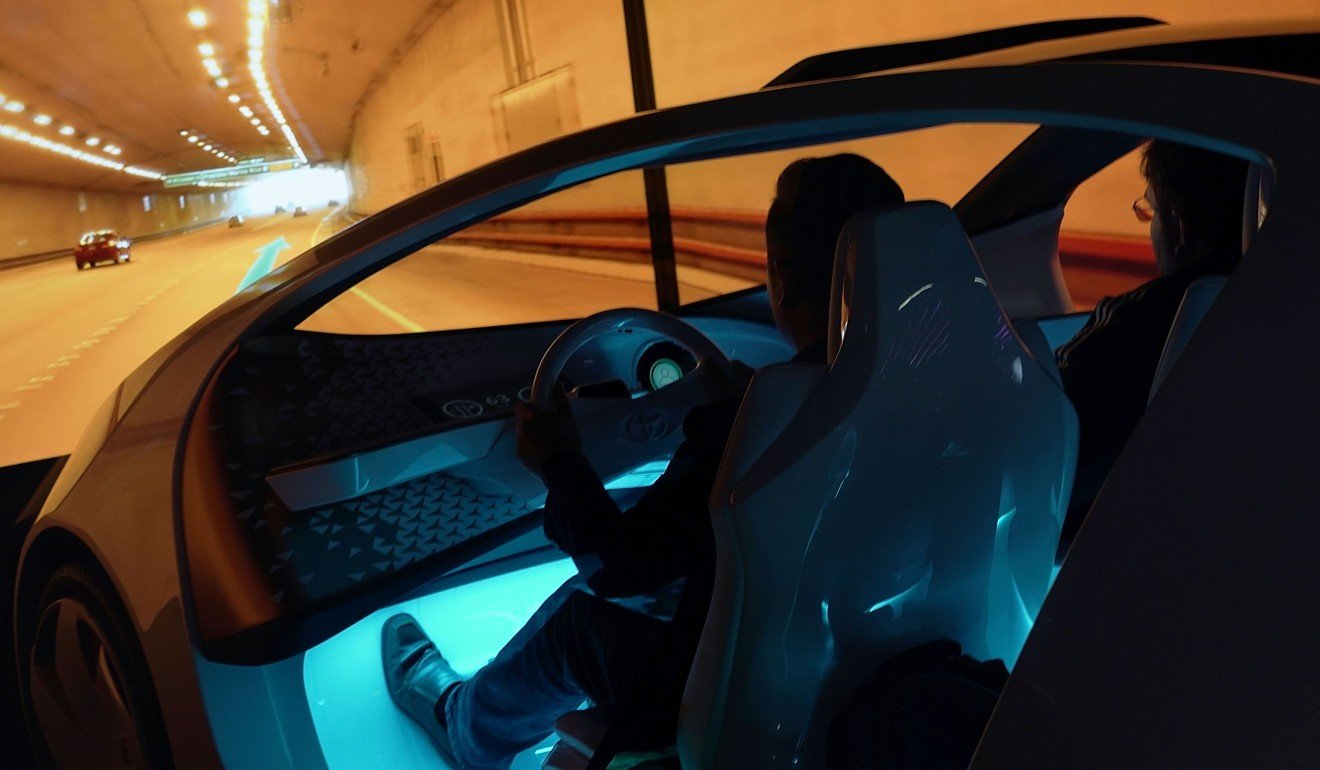Stephen Chen
 Equipping nuclear submarines with AI would give China an upper hand in undersea battles while pushing applications of the technology to a new level
Equipping nuclear submarines with AI would give China an upper hand in undersea battles while pushing applications of the technology to a new level
A submarine with AI-augmented brainpower not only would give China’s large navy an upper hand in battle under the world’s oceans but would push applications of AI technology to a new level, according to the researcher, who spoke on condition of anonymity because of the project’s sensitivity.
“Though a submarine has enormous power of destruction, its brain is actually quite small,” the researcher said.
While a nuclear submarine depends on the skill, experience and efficiency of its crew to operate effectively, the demands of modern warfare could introduce variables that would cause even the smoothest-run operation to come unglued.
For instance, if the 100 to 300 people in the sub’s crew were forced to remain together in their canister in deep, dark water for months, the rising stress level could affect the commanding officers’ decision-making powers, even leading to bad judgment.
 An AI decision-support system with “its own thoughts” would reduce the commanding officers’ workload and mental burden, according to the researcher.
An AI decision-support system with “its own thoughts” would reduce the commanding officers’ workload and mental burden, according to the researcher.
The possibility of AI having a prominent role in nuclear submarines – through the work of Chinese scientists – is a milestone both for China and the technology.
Since the first nuclear submarines appeared in the early 1950s, produced by the US, they have ranked among the most sophisticated war machines. It can take as long as two decades for a nuclear sub to progress from an idea on a blueprint to the finished product, sliding down a slipway.
But the subs’ computer brains have generally been out of sync with their state-of-the-art image.
First, the technology in most submarine computers tends to predate the vessel’s commissioning. Furthermore, military-grade electronic components have required extensive battle-hardening to withstand shocks, heat or electromagnetic disturbance, sacrificing speed for reliability.
 Up till now, the “thinking” function on a nuclear sub, including interpreting and answering signals picked up by sonar, a system for detecting objects under water by emitting sound pulses, has been handled almost exclusively by human naval personnel, not by machines.
Up till now, the “thinking” function on a nuclear sub, including interpreting and answering signals picked up by sonar, a system for detecting objects under water by emitting sound pulses, has been handled almost exclusively by human naval personnel, not by machines.
Now, through AI technology, a convolutional neural network undergirds so-called machine learning. This structure underpins a decision support system that can acquire knowledge, improve skills and develop new strategy without human intervention.
By mimicking the workings of the human brain, the system can process a large amount of data. On a nuclear submarine, data could come from the Chinese navy’s rapidly increasing observation networks, the submarine’s own sensors or daily interactions with the crew.
An AI assistant could support commanding officers by assessing the battlefield environment, providing insight into how levels of saline in the ocean and water temperature might affect the accuracy of sonar systems.
It also could recognise and flag threats from an enemy faster and more accurately than human operators.
 An AI assist also could help commanding officers estimate the risks and benefits of certain combat manoeuvres, even suggesting moves not considered by the vessel’s captain.
An AI assist also could help commanding officers estimate the risks and benefits of certain combat manoeuvres, even suggesting moves not considered by the vessel’s captain.
China’s military wants the new AI technology to deliver on certain basic demands, according to the researcher.
A priority is ensuring the system can follow and understand sophisticated, ever-changing underwater operations. It also must have a simple structure to reduce its risk of failure. And it must be compact and compatible with subs’ existing computer systems.
“It is like putting an elephant into a shoebox,” said the researcher when asked about the challenge of the project.
‘It is not science fiction’: AI experts warn of new global arms race for killer robots, call for ban
“What the military cares most about is not fancy features. What they care most is the thing does not screw up amid the heat of a battle.”
The military currently has no plan to reduce the size of submarine crews when the AI technology is ready for deployment. “There must be a human hand on every critical post. This is for safety redundancy,” the researcher said.
 Beijing, which takes the AI submarine programme very seriously, is ploughing abundant resources into the undertaking, according to the researcher.
Beijing, which takes the AI submarine programme very seriously, is ploughing abundant resources into the undertaking, according to the researcher.
China’s move highlights the spectre of a widening AI technology gap. The existence of the AI sub tech divide was underscored by the comment of a US military systems executive taking part in a survey last year by the US Defence Advanced Research Projects Agency on “disruptive technologies” that a hostile country could use against Americans.
Joe Marino, CEO of Rite-Solutions, a technical company supporting the US Naval Undersea System Command, touted the value of using AI to enhance submarine commanding officers’ decision-making powers.
“[Without matching other countries’ advances in AI submarine technology] our CO (commanding officers) would be fighting an opponent who could make faster, more informed and better decisions,” Marino wrote in an article on the company’s website.
 “Combined with undersea technology advancements by near-peer competitors such as Russia and China in areas such as stealth, sensors, weapons, this ‘cognitive advantage’ could threaten US undersea dominance,” he wrote.
“Combined with undersea technology advancements by near-peer competitors such as Russia and China in areas such as stealth, sensors, weapons, this ‘cognitive advantage’ could threaten US undersea dominance,” he wrote.
Marino urged the US navy to embrace AI and challenge America’s defence industry to investigate the possible application of the technology on US submarines.
Zhu Min, a researcher at the Institute of Acoustics with the Chinese Academy of Sciences and a lead scientist in China’s deep water exploration programme, said AI has been a fashionable word in China’s submarine research community for the past couple of years.
“In the past, the technology was too distant from application, but recently a lot of progress has been achieved,” he said. “There seems to be hope around the corner.”
Where traditional computer programs on submarines have needed “step-by-step” human guidance, AI has the potential to “change the game under the sea”, Zhu said.
AI algorithms usually run on large, state-of-the-art computers, requiring intensive calculation to process a huge amount of data.
Recent technical advancements, however, have suggested it may be possible for these algorithms – translated in layman’s terms as rules for solving a problem in a finite number of steps – to be executed on small machines.
AlphaGo, a computer program that plays the board game Go, developed by Google’s Deep Mind, for instance, initially required several powerful computers. After two years it achieved much higher performance with only a tenth of the calculating hardware.
 AlphaGo Zero, the newest version of the program, no longer needs to learn how to play the game better from a human player. It can teach itself to be a better player without human help.
AlphaGo Zero, the newest version of the program, no longer needs to learn how to play the game better from a human player. It can teach itself to be a better player without human help.
Zhu said using AI on a strategic weaponry platform such as a nuclear submarine would be a natural next step for the evolving technology. Letting it seek new knowledge without restraint, however, could lead to unexpected consequences.
If the system started to have its own way of thinking, “we may have a runaway submarine with enough nuclear arsenals to destroy a continent,” he said, describing what sounded like the plot of a science-fiction film or novel.
“This is definitely a risk the authorities should consider when introducing AI to a sub.”
Deng Zhidong, a computer science professor and AI scholar at Beijing’s Tsinghua University, said the risk of AI-based machines’ rebelling against human society did not exist – at least for the foreseeable future.
“An AI-powered machine is still a machine. It does not have a life,” he said.
An AI system on a submarine, though sophisticated, in many ways would be similar to self-driving technology on some cars, Deng said.
“You can shut it down and shift to manual any time. It will be the same on a nuclear submarine.”
No comments:
Post a Comment